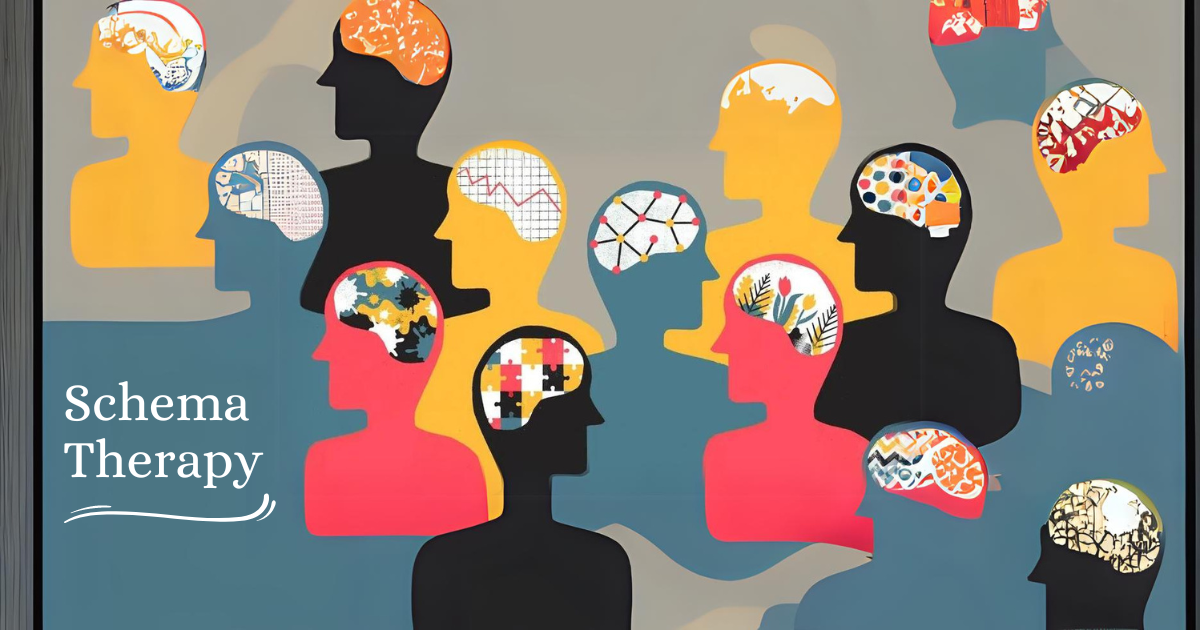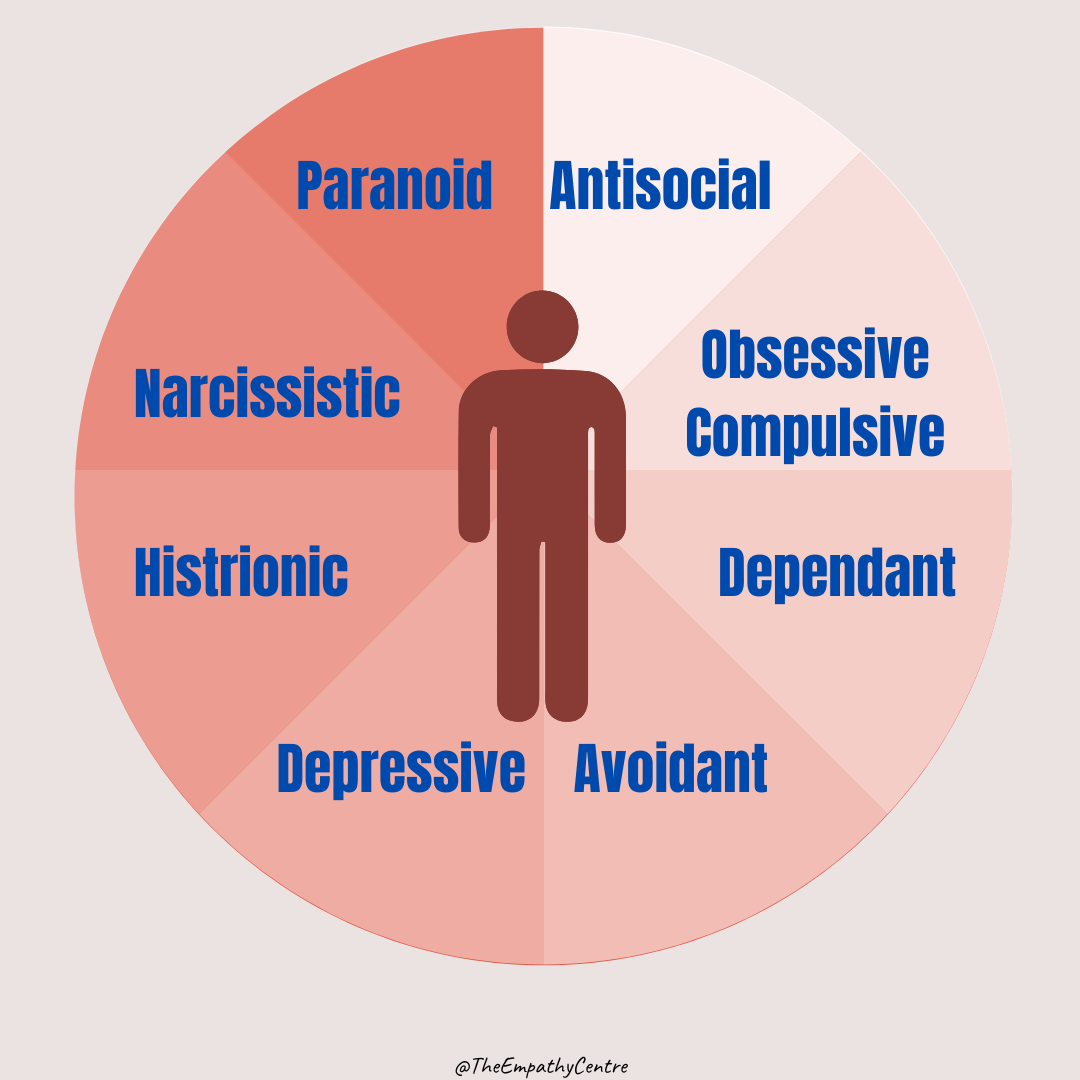Contents
Introduction

Schema Therapy: Techniques, Applications, and Effectiveness
Schema Therapy is an integrative psychotherapy that combines elements of cognitive-behavioral therapy (CBT), psychoanalytic approaches, attachment theory, and experiential techniques. It is particularly effective for individuals with long-standing emotional issues, such as personality disorders, chronic depression, and relationship difficulties. Schema Therapy focuses on identifying and transforming deeply ingrained patterns known as “schemas,” which are formed in childhood and continue to affect thoughts, emotions, and behaviors in adulthood.
In this article, we will Research into the core principles of Schema Therapy, explore its unique techniques, discuss its practical applications across various mental health conditions, and address common misconceptions and challenges associated with this therapeutic approach.
What is Schema Therapy?
Schema Therapy is an integrative psychotherapy approach developed by Dr. Jeffrey Young in the 1990s, designed to treat chronic psychological issues that are resistant to other forms of therapy. It combines elements from cognitive-behavioral therapy (CBT), psychoanalytic theories, attachment theory, and experiential techniques such as Gestalt therapy. The goal of Schema Therapy is to help individuals identify, understand, and change deep-rooted maladaptive patterns, known as “schemas,” that originate in childhood and persist into adulthood, impacting their thoughts, emotions, behaviors, and relationships.
Why Schema Therapy is Important
Schema Therapy is crucial in the field of psychotherapy because it offers a more in-depth approach to understanding and addressing the root causes of persistent emotional and behavioral patterns. Unlike traditional Cognitive Behavioral Therapy (CBT), which primarily focuses on identifying and changing problematic thoughts and behaviors in the present,
Schema Therapy Looks into the origins of deeply held patterns by examining how early life experiences and unmet emotional needs contribute to the formation of “schemas.” These schemas—core beliefs and emotional responses—often develop during childhood and continue to shape an individual’s thoughts, feelings, and behaviors throughout their life.
Understanding How Schema Therapy Works
Schema Therapy is designed to help individuals with deeply ingrained emotional patterns, or “schemas,” that often originate from unmet needs in childhood. These schemas can lead to chronic emotional difficulties and unhealthy behaviors. The therapy focuses on identifying these schemas, understanding their origins, and transforming them to promote healthier emotional and behavioral responses.
We will explore Schema Therapy in stages: starting with a summary, examining core techniques, and then discussing practical applications in detail.
Simple Overview
Core Idea Schema Therapy is based on the concept that early maladaptive schemas, formed in childhood, drive dysfunctional patterns in adulthood. By identifying and changing these schemas, individuals can break free from self-defeating cycles and develop healthier coping mechanisms.
Real-Life Example: Imagine someone who has a “Defectiveness” schema, believing they are fundamentally flawed. In Schema Therapy, they would:
- Identify the Schema: Recognize and articulate the core belief that you are inherently defective or unworthy. This involves becoming aware of and clearly identifying these deeply held negative self-perceptions. Acknowledge how these beliefs affect your thoughts and behaviors. Understanding this schema is the first step in addressing and transforming it.
- Challenge the Schema: Collaborate with a therapist to explore the origins and development of these beliefs. Assess the validity of these schemas in relation to your current life experiences and evidence. Examine how past experiences might have shaped these beliefs and consider how they may not reflect your present reality.
- Reframe and Heal: Work on developing healthier, more adaptive beliefs about yourself through therapeutic techniques. Practice self-compassion and positive self-talk to replace negative self-perceptions. This process involves integrating new, supportive beliefs into your self-concept
Critical Concepts
Schema Therapy involves several key components, such as cognitive restructuring, experiential techniques, and behavioral pattern-breaking, to address deep-rooted schemas and their effects.
- Schema Mode Model: Identifies different emotional states or “modes” that people switch into when triggered by maladaptive schemas. The therapy helps clients recognize these modes and strengthens the “Healthy Adult” mode to manage emotions and behaviors effectively.
- Cognitive Restructuring: Focuses on challenging and changing irrational beliefs tied to schemas. By replacing negative thoughts with balanced ones, clients can reduce the emotional impact of these schemas.
- Experiential Techniques: Techniques like “Imagery Rescripting” help clients reprocess and alter emotional memories related to their schemas, promoting healing and reducing their intensity.
- Behavioral Pattern-Breaking: Encourages clients to practice new, healthier behaviors to replace self-defeating patterns driven by their schemas.
- Limited Reparenting: Provides a supportive therapeutic relationship that meets unmet emotional needs, fostering healthier emotional responses and growth.
Detailed Assessment
The theoretical foundation of Schema Therapy integrates cognitive-behavioral, experiential, and psychodynamic approaches to address both the cognitive and emotional aspects of maladaptive schemas.
- Cognitive-Behavioral Foundations: Schema Therapy builds on cognitive-behavioral principles to address and modify distorted thinking patterns that contribute to psychological difficulties. The therapy focuses on identifying and challenging maladaptive schemas—deeply held beliefs and patterns of thinking that are often irrational or dysfunctional.
- Experiential and Emotional Processing: Schema Therapy incorporates experiential techniques designed to help clients process and work through deep-seated emotions and unmet needs stemming from childhood. This involves engaging with powerful, often long-standing emotional issues through techniques such as imagery exercises, role-playing, and emotional expression.
- Skill Development and Reparenting: In Schema Therapy, a significant focus is placed on developing essential skills for emotional regulation and interpersonal effectiveness. Clients learn strategies to manage their emotions more effectively, improve their relationships, and cope with daily challenges. Additionally, Schema Therapy involves a concept known as “reparenting,” where the therapist provides a supportive and nurturing relationship.
Notable Psychologists in Schema Therapy

- Jeffrey Young: Founder of Schema Therapy, Young developed the therapy to address complex and chronic psychological disorders, focusing on maladaptive schemas and their impact on personality and behavior. (Jeffrey Young Publications)
- Janet Klosko: A key figure in Schema Therapy, Klosko has contributed significantly to its development and clinical application, particularly in refining techniques for treating personality disorders. (Janet Klosko Publications)
- Daniel J. Siegel: Although not directly involved in Schema Therapy, Siegel’s work on interpersonal neurobiology and the integration of mind and brain has influenced schema-focused approaches by emphasizing the importance of early life experiences and relational patterns. (Daniel J. Siegel Research)
- Eileen M. Leahy: Known for her research and clinical practice in Schema Therapy, Leahy has focused on the treatment of complex trauma and the adaptation of schema-focused techniques for diverse populations. (Eileen M. Leahy Publications)
- Joan A. Farrell: Developed the Group Schema Therapy approach, Farrell has worked on adapting schema-focused techniques for group settings, enhancing the therapy’s effectiveness for individuals with personality disorders. (Joan A. Farrell Publications)
Applications of Schema Therapy in Treating Mental Health Disorders

Personality Disorders
Schema Therapy is particularly effective in treating personality disorders, such as Borderline Personality Disorder (BPD) and Narcissistic Personality Disorder (NPD). It addresses the deep-rooted schemas that drive these disorders.
Example: Consider Anna, who has Borderline Personality Disorder. Her therapist helps her identify her “Abandonment” and “Mistrust” schemas and teaches her how to self-soothe using the “Healthy Adult” mode.
Image Source: theempathycentre.com

Chronic Depression
For chronic depression, Schema Therapy goes beyond symptom management, helping clients address the “Defectiveness” or “Failure” schemas that contribute to persistent low mood.
Example: David, who has struggled with depression for years, learns to recognize his “Unlovability” schema and works on developing healthier self-perceptions through imagery and cognitive restructuring.
Image Source: creakyjoints.org

Relationship Issues
Schema Therapy is also beneficial for relationship problems, helping individuals identify and change destructive patterns like co-dependency or avoidance.
Example: Emily, who often finds herself in one-sided relationships where she feels overly responsible for her partner’s happiness, discovers she has a Dependent/Enmeshment Schema.” This schema leads her to sacrifice her own needs and boundaries to maintain her relationships
Image Source: psychologytoday.com
Common Myths About Schema Therapy
| Myth | Reality |
| Schema Therapy is only for personality disorders. | Schema Therapy is effective for a range of issues, including chronic depression, anxiety, and relationship problems, not just personality disorders. |
| Schema Therapy is too intense and emotionally overwhelming. | While Schema Therapy can be deep and intense, it is carefully paced by the therapist to match the client’s comfort level and readiness for emotional work. |
| Schema Therapy is just another form of CBT. | Schema Therapy integrates elements of CBT, but also includes experiential and psychodynamic techniques, making it a more comprehensive therapeutic approach. |
| It takes too long to see results with Schema Therapy | The duration varies depending on the complexity of issues, but many clients begin to see meaningful changes within a few months. |
Criticisms and Limitations
- Risk of Emotional Intensity: Schema Therapy can be emotionally intense, as it involves delving into deeply ingrained schemas and confronting painful memories from the past. The process requires clients to face and process significant emotional material, which can be overwhelming for some.
- Not Suitable for All Issues: Schema Therapy is designed to address complex, long-standing psychological issues that are rooted in early life experiences. While it is effective for individuals dealing with chronic patterns and deep-seated emotional conflicts, it may not be the best fit for clients who have more immediate or situational concerns.
- Critique of Focus: A common critique of Schema Therapy is that its emphasis on early-life schemas might overshadow the importance of addressing current life circumstances and external factors. Critics argue that by focusing heavily on past experiences and underlying schemas, the therapy might not fully address immediate situational or contextual issues that also impact an individual’s well-being.
Conclusion
Schema Therapy offers a comprehensive approach to treating complex emotional and behavioral issues by addressing deeply ingrained schemas that develop from early life experiences. Through its integrative techniques, such as cognitive restructuring, experiential methods, and limited repainting, Schema Therapy empowers individuals to break free from self-defeating patterns and build healthier relationships and coping strategies. While it may not be suitable for every client or issue, its depth and adaptability make it a valuable option for those with chronic psychological concerns seeking lasting change and emotional growth.
References
- Beck, A. T., & Haigh, E. A. P. (2014). Advances in cognitive theory and therapy: The generic cognitive model. Annual Review of Clinical Psychology, 10(1), 1-24.
- Bernstein, D. P., Arntz, A., & de Vos, M. (2007). Schema focused therapy in forensic settings: Theoretical model and recommendations for best clinical practice. International Journal of Forensic Mental Health, 6(2), 169-183.
- Farrell, J. M., & Shaw, I. A. (2018). Group schema therapy for borderline personality disorder: A step-by-step treatment manual with patient workbook. Wiley-Blackwell.
- Kellogg, S. H., & Young, J. E. (2006). Schema therapy for borderline personality disorder. Journal of Clinical Psychology, 62(4), 445-458.
- Rafaeli, E., Bernstein, D. P., & Young, J. E. (2011). Schema therapy: Distinctive features. Routledge.
- Roediger, E., Stevens, B. A., & Brockman, R. (2018). Contextual schema therapy: An integrative approach to personality disorders, emotional dysregulation, and interpersonal functioning. New Harbinger Publications.
- Young, J. E., Klosko, J. S., & Weishaar, M. E. (2003). Schema therapy: A practitioner’s guide. The Guilford Press.
- Lobbestael, J., van Vreeswijk, M. F., & Arntz, A. (2008). An empirical test of schema mode conceptualizations in personality disorders. Behaviour Research and Therapy, 46(7), 854-860.
- Masley, S. A., Gillanders, D., Simpson, S. G., & Taylor, M. A. (2012). A systematic review of the evidence base for schema therapy. Cognitive Behaviour Therapy, 41(3), 185-202.
- Hawke, L. D., & Provencher, M. D. (2011). Schema theory and schema therapy in mood and anxiety disorders: A review. Journal of Cognitive Psychotherapy, 25(4), 257-276.
- van Vreeswijk, M. F., Broersen, J., & Nadort, M. (2012). Schema therapy: Distinctive features. Routledge.
Explore more Theories & Therapies








